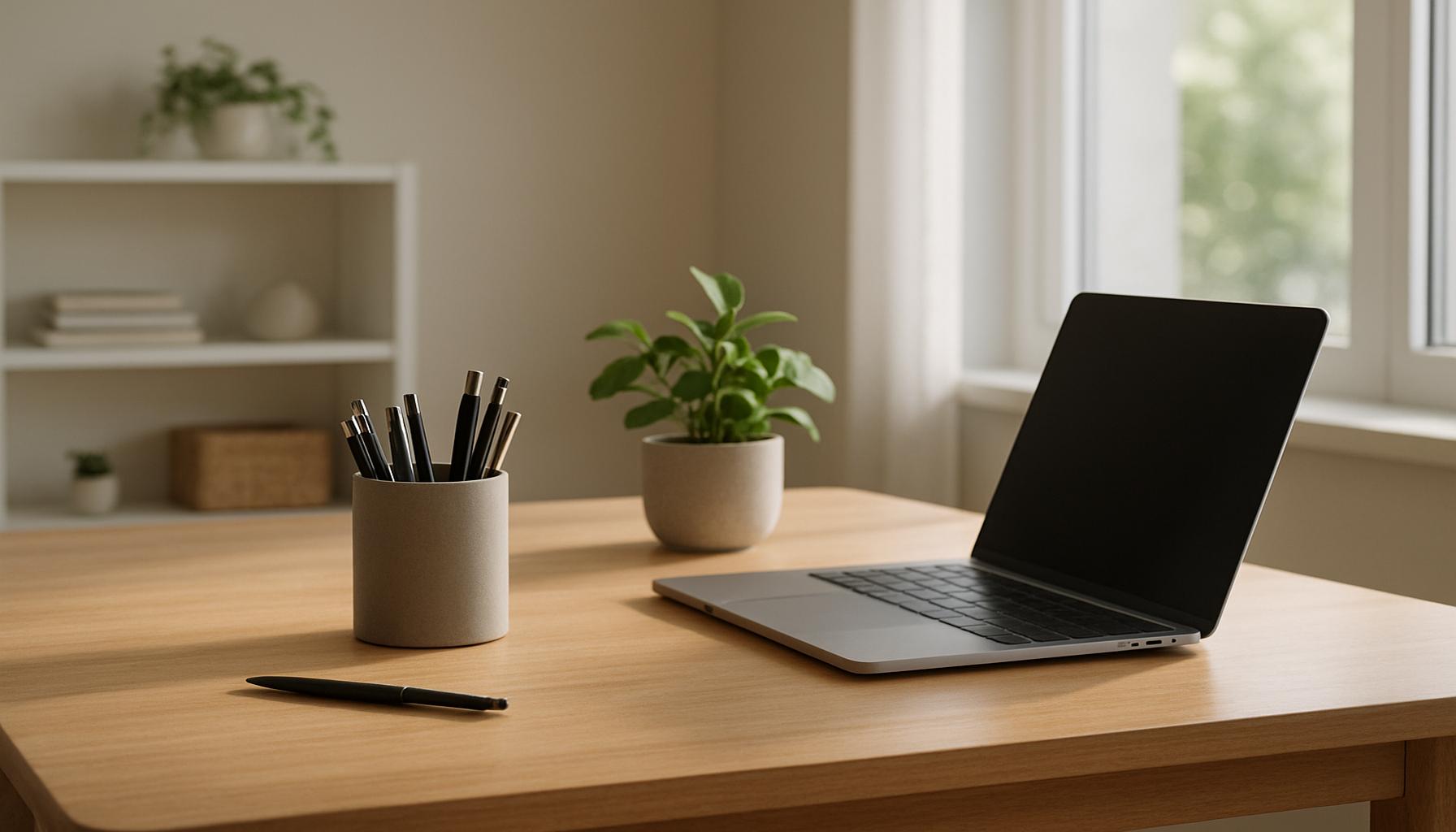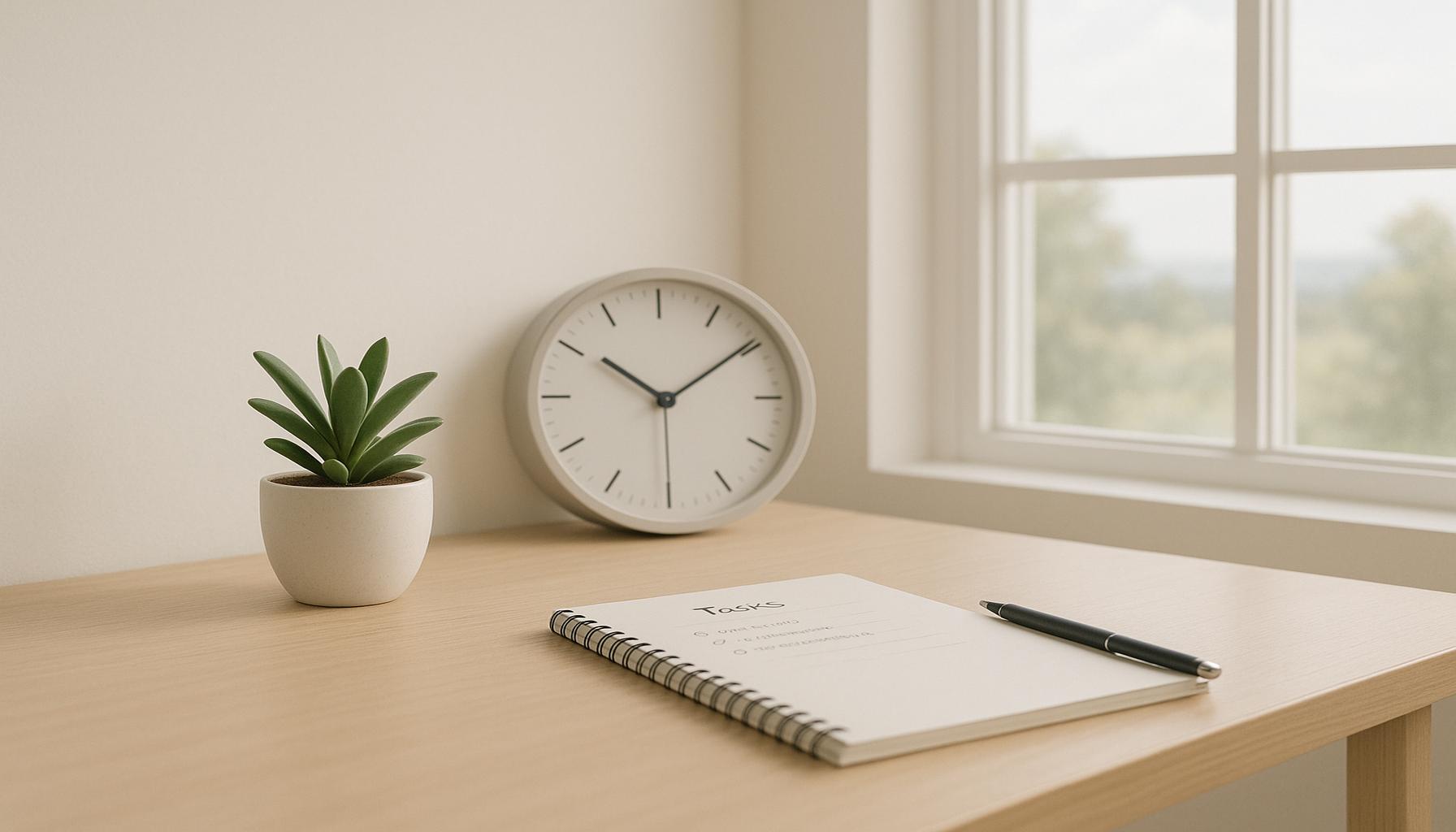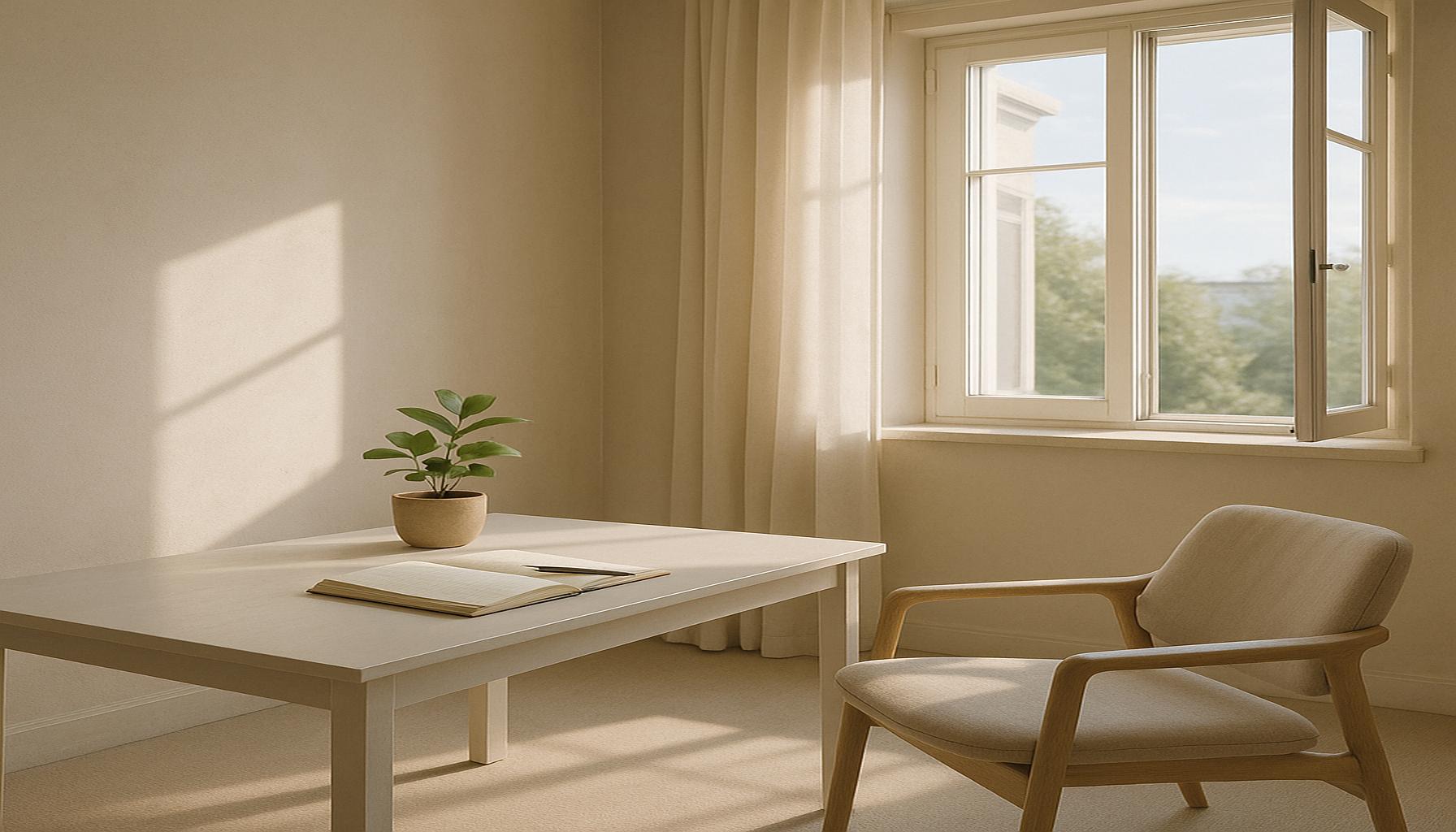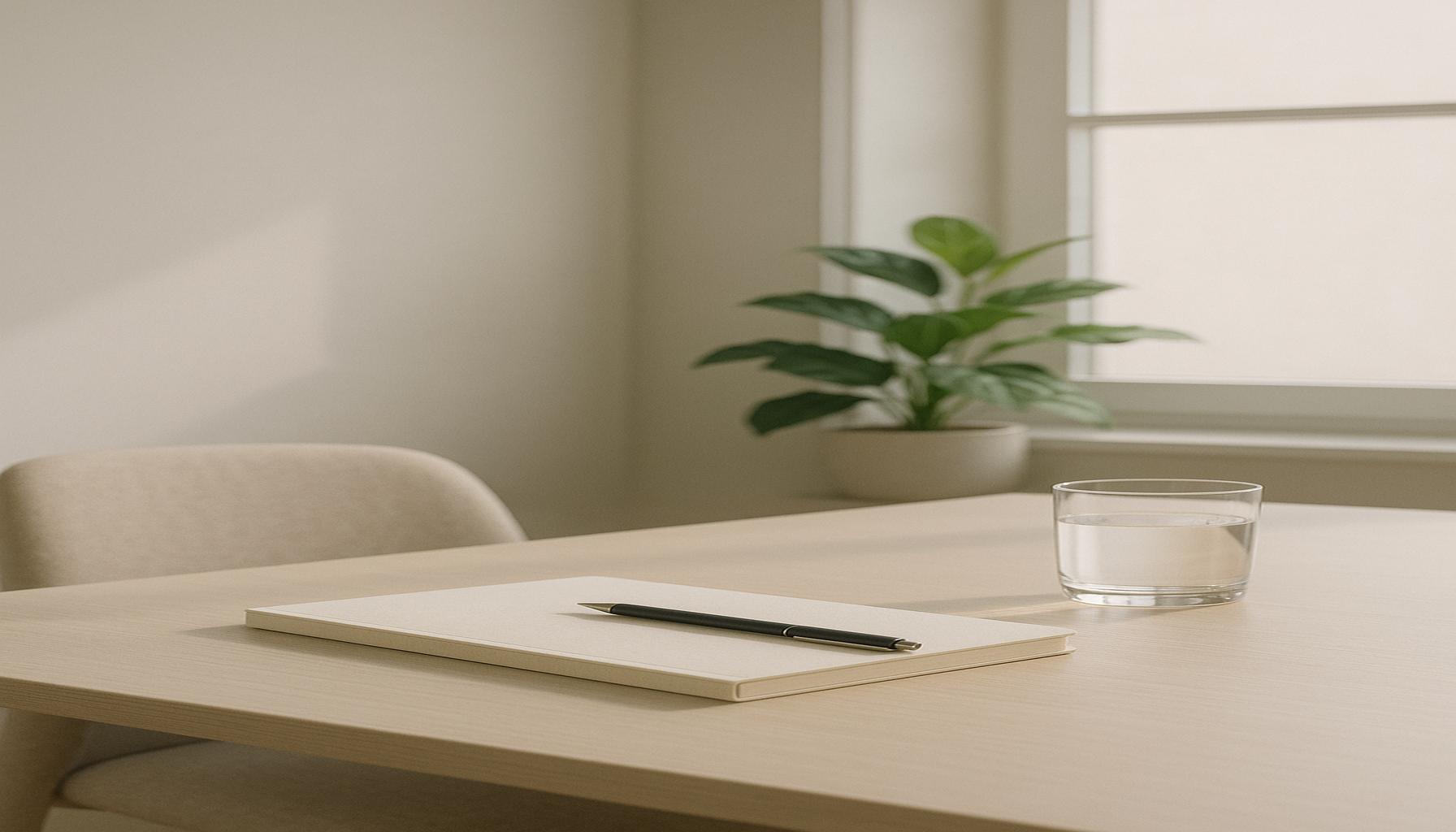Creating Spaces of Clarity: Practical Tips for a Minimalist and Organized Environment

Discover the Power of Minimalism
In today’s fast-paced world, chaos often overwhelms our spaces and minds. Our homes and work environments are frequently filled with excess, leaving us feeling cluttered both physically and mentally. This clutter can detract from our ability to concentrate and perform effectively. It’s essential to create environments that enhance clarity and foster productivity. Embracing a minimalist and organized atmosphere can significantly contribute to your well-being. Taking a minimalist approach does not mean living in an empty space; rather, it is about intentionality, making mindful choices about what we allow into our lives.
Why Choose Minimalism?
Minimalism is not just about having empty rooms; it is a lifestyle philosophy that encourages more meaningful connections with our possessions and experiences. Consider these key benefits:
- Reduced Stress: A clutter-free environment leads to reduced cognitive load. When our surroundings are organized, we can focus better on tasks, which significantly lowers stress levels. Studies have shown that clutter can increase feelings of anxiety and depression, making it essential to cultivate a serene environment.
- Increased Focus: A streamlined environment supports better concentration, allowing you to devote your mental resources to what truly matters. For example, a tidy desk at work not only enhances your productivity but also fosters a sense of achievement and organization, which can improve job performance.
- Enhanced Creativity: Clean spaces create room for fresh ideas to flourish. When your environment is free from distractions, your mind is more open to innovative thinking. Many artists and creators deliberately keep their spaces minimal to ensure clarity and inspiration.
Practical Tips for an Organized Environment
Creating spaces of clarity involves intentionality and commitment. Here are a few practical strategies to consider as you embark on your minimalist journey:
- Declutter Regularly: Make decluttering a regular habit. Set aside time each month to assess your belongings and remove items that no longer serve a purpose. The “one in, one out” rule can be effective: for every new item acquired, an old item should leave.
- Define Spaces: Assign specific areas for specific tasks – work, relaxation, and hobbies. This helps create a psychological association that can enhance productivity and peace. For instance, creating a separate reading nook can encourage leisure and relaxation, away from work distractions.
- Embrace Functional Decor: Choose items that are both aesthetically pleasing and useful. Multifunctional furniture, like a coffee table that doubles as a storage box, exemplifies this approach by marrying style with practicality.
By understanding the importance of a minimalist approach, you set the stage for an organized and serene environment. Begin your journey to clarity today. As you gradually minimize the excess in your life, you will likely find that both your space and mindset transform, paving the way for more meaningful experiences and interactions. Minimalism isn’t just a trend; it’s an ongoing path toward a higher quality of life. Discover more about how this approach can positively impact your daily existence and lead to greater fulfillment.
DISCOVER MORE: Click here to enhance your productivity
Transform Your Environment One Step at a Time
Creating a space that embodies clarity and tranquility requires a mindful and methodical approach. The transition to minimalism can seem daunting for many, often leading to feelings of overwhelm. However, embracing small, intentional steps can spark significant transformations in both your physical surroundings and mental state. In this guide, we explore effective strategies to help you navigate this journey smoothly and meaningfully.
- Start Small: Begin your minimalist journey with the smallest, most manageable area—think of a cluttered drawer, a single cabinet, or even a desk that’s become a dumping ground. For instance, tackling a single junk drawer can provide immediate, visible results that serve to motivate you to continue onto larger projects like the entire kitchen or bedroom. Celebrating these small victories is crucial; each completed space reinforces a sense of achievement and builds momentum to tackle the next challenge.
- Set Clear Goals: Minimalism is a personal philosophy, and defining what it means for you can lend clarity to your journey. Are you looking to create more space for a budding hobby such as painting or writing? Or perhaps your goal is to lessen distractions in your home office to facilitate better work performance? Whatever your aim, articulating it helps create a focused roadmap, giving purpose to your decluttering efforts.
- Implement the ‘Four-Box Method’: A practical approach to decluttering is the ‘Four-Box Method,’ where you designate four boxes labeled Keep, Donate, Recycle, and Trash. When you sift through your belongings, categorize each item into one of these boxes. This straightforward framework simplifies the decision-making process and can lead to a more organized home. For example, clothing that’s barely worn can be donated to local shelters or thrift shops, allowing others to benefit from what you no longer need.
- Digital Decluttering: The principles of minimalism aren’t limited to the physical realm. Digital spaces can also become cluttered and overwhelming. Consider organizing your computer files, unsubscribing from unnecessary email lists, and decluttering your desktop by removing unused icons. These small actions not only streamline your digital workspace but can significantly reduce stress and enhance focus, ultimately creating a more zen-like atmosphere.
- Establish Daily Routines: To sustain minimalism over the long term, it is important to establish daily routines that prioritize cleanliness and organization. Dedicating just 10 minutes each day to tidying up can prevent clutter from accumulating once again. This consistency helps integrate minimalist habits into your lifestyle, making them second nature over time.
It’s important to remember that adopting a minimalist lifestyle is a personal endeavor; strategies that work for one individual may not resonate with another. Thus, allow yourself the flexibility to adapt these tips according to your own lifestyle and preferences. Embracing minimalism can lead to a more structured environment that fosters tranquility and concentrated focus.
Furthermore, understanding the psychological toll of a cluttered environment can serve as additional motivation. Studies reveal that excess clutter can impede our ability to process information effectively and maintain focus. Therefore, with each item you choose to let go of, you are not merely decluttering your space, but also liberating your mind. This awareness can act as a powerful catalyst, shaping your journey towards a more organized, balanced, and fulfilling life.
| Advantage | Description |
|---|---|
| Enhanced Focus | A minimalist environment reduces distractions, allowing for greater concentration on tasks. |
| Reduced Stress | An organized space promotes a sense of calm, fostering emotional well-being and relaxation. |
| Better Time Management | With items easily accessible, time spent searching for things will decrease, optimizing productivity. |
| Increased Creativity | A clear space can stimulate a free flow of thoughts and ideas, encouraging innovation. |
DISCOVER MORE: Click here for essential workspace strategies
Designing Your Space Intententionally
Once you have made strides in decluttering, the next step towards achieving a minimalist and organized environment is to thoughtfully design the spaces in your home. This involves not just the elimination of excess, but also the mindful arrangement of what remains. Here are additional strategies that can enhance your space and promote clarity.
- Embrace Multifunctional Furniture: In a minimalist space, prioritizing minimalist furniture is crucial. Look for pieces that serve more than one purpose, such as a coffee table that provides storage or a sofa bed for guests. This not only maximizes space but also reduces the number of items in your home, contributing to an organized environment. Brands like IKEA offer a variety of multifunctional options that can be both stylish and practical.
- Mind Your Color Palette: Color can significantly influence the ambiance of a space. Opt for a cohesive color palette with neutral tones, soft pastels, or monochromatic schemes that promote tranquility. This visual simplicity can help create a serene atmosphere, allowing your space to feel more open and calm. Additionally, consider incorporating natural elements, such as plants, which both purify the air and bring a touch of nature indoors, complementing your minimalist aesthetic.
- Utilize Vertical Space: One effective approach to organization is to work upwards. Wall-mounted shelves and hooks can store items while keeping surfaces clear, which aids both organization and visual clarity. Use decorative baskets to store items neatly on higher shelves, making them easily accessible yet out of sight. This approach can be particularly beneficial in smaller spaces, bringing an illusion of height and openness.
- Personalize Mindfully: While minimalism encourages restraint, it doesn’t mean you have to sacrifice personal touches that make a house feel like home. Curate a small selection of meaningful decor—such as family photos or travel souvenirs—that resonate with you personally. Limit these items to maintain a clean look, choosing a few standout pieces that can be rotated periodically to refresh your space without cluttering it.
- Establish the ‘One In, One Out’ Rule: To maintain your organized environment, consider implementing the ‘one in, one out’ rule. For every new item you bring into your home, commit to removing one existing item. This discipline helps prevent clutter accumulation and ensures that you remain aligned with your minimalist goals. It can serve as a powerful reminder to evaluate the necessity and usefulness of what you own.
- Incorporate a Cleaning Schedule: Regular cleaning is essential to uphold an organized space. Design a cleaning schedule that incorporates daily, weekly, and monthly tasks to ensure that your environment remains clutter-free and visually appealing. This could include daily tidying sessions, weekly deep cleans, and monthly purges of unwanted items. Using a digital planner or a simple checklist can help you visualize your cleaning commitments and encourage accountability.
Incorporating these design-focused strategies can enhance the effectiveness of your minimalist lifestyle, promoting not just physical space clarity, but also mental clarity. An organized environment speaks volumes about one’s mindset, reflecting an intentional approach to life. With each carefully chosen item and every thought-out arrangement, you cultivate a space that nurtures productivity, creativity, and relaxation, driving you closer to your ideal living environment.
DISCOVER MORE: Click here to learn how minimalism can boost your efficiency
Conclusion
Creating spaces of clarity through a minimalist and organized environment can transform not only your physical surroundings but also your mental well-being. By implementing practical strategies such as embracing multifunctional furniture, carefully selecting a cohesive color palette, and utilizing vertical space, you can elevate the functionality and serenity of your home. Personalizing your space mindfully with meaningful decor while establishing the ‘one in, one out’ rule ensures that clutter remains at bay, fostering a harmoniously balanced atmosphere.
Moreover, developing a consistent cleaning schedule can work wonders in maintaining an organized environment, helping you feel more in control and less overwhelmed. As you embark on this journey toward minimalism, remember that the ultimate goal is not merely to eliminate items but to curate a space that reflects your values and priorities. Each deliberate choice and arrangement can pave the way to a lifestyle that encourages clarity, productivity, and peace.
As you consider these practical tips, challenge yourself to view your environment not just as a collection of possessions, but as a canvas for your life. The clarity you create within your home can lead to greater focus and creativity in all aspects of your life. Dive deeper into the world of minimalism and explore how a thoughtfully organized environment can redefine your approach to everyday living, providing you with the tools to thrive in an increasingly cluttered world.


